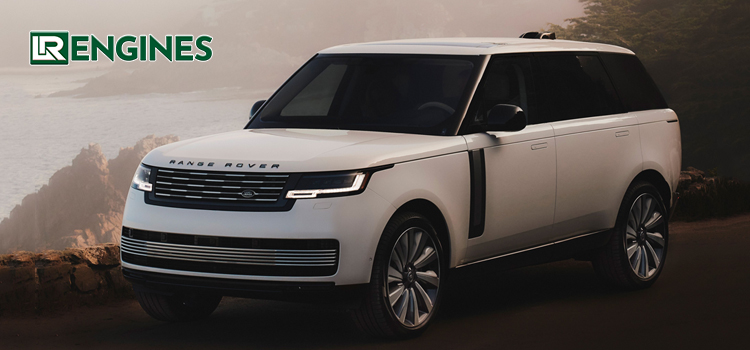How Does The Range Rover 2.0 Engine’s Performance Compare To Its Predecessors?

Introduction
Range Rover, an iconic marque known for luxury and off-road prowess, has continually evolved its engineering to meet modern demands. One significant aspect of this evolution is the improvement in engine technology. The introduction of the Range Rover 2.0 engines represents a milestone in this journey, promising enhanced performance and efficiency. We delves into a comprehensive comparison between the Range Rover 2.0 engine and its predecessors, analyzing their respective strengths and weaknesses.
The Legacy of Range Rover Engines
Before delving into the specifics of the 2.0 engine, it’s essential to understand the lineage it stems from. Range Rover has a rich history of robust and capable engines, ranging from powerful V8s to efficient diesel options. Each iteration has contributed to the brand’s reputation for exceptional performance both on and off the road.
Introducing the Range Rover 2.0 Engine
The Range Rover 2.0 engine marks a paradigm shift in the brand’s approach to powertrains. Designed with a focus on efficiency without compromising performance, this turbocharged inline-four engine represents a departure from traditional larger-displacement units. Boasting advanced technologies such as direct fuel injection and variable valve timing, it aims to deliver a compelling blend of power and fuel economy.
Power and Torque: A Comparative Analysis
One of the primary metrics for evaluating engine performance is power output and torque delivery. How does the engine stack up against its predecessors in this regard? By comparing horsepower and torque figures across different engine options, we can discern the evolution in Range Rover’s powertrain strategy and its impact on driving dynamics.
Fuel Efficiency and Environmental Impact
In an era increasingly focused on sustainability, fuel efficiency and emissions reduction have become paramount concerns for automakers. How does the Range Rover engine fare in terms of fuel economy and environmental friendliness compared to earlier models? This section explores the technological advancements that enable the 2.0 engine to achieve greater efficiency while meeting stringent emissions regulations.
Driving Dynamics and Performance
Beyond raw numbers, driving dynamics play a crucial role in the overall experience of piloting a Range Rover. From acceleration and responsiveness to refinement and NVH (Noise, Vibration, and Harshness) levels, every aspect contributes to the vehicle’s performance credentials. How does the 2.0 engine enhance driving dynamics compared to its predecessors? We examine factors such as throttle response, transmission calibration, and overall drivability to provide a holistic assessment.
Reliability and Longevity
Reliability is a cornerstone of Range Rover’s appeal, particularly for drivers who demand durability and longevity from their vehicles. How does the 2.0 engine fare in terms of reliability compared to earlier iterations? This section evaluates factors such as build quality, component durability, and maintenance requirements to gauge the engine’s long-term prospects.
Adaptability and Future Prospects
As automotive technology continues to evolve, adaptability becomes crucial for staying relevant in a rapidly changing landscape. How well-positioned is the Range Rover 2.0 engine to adapt to future trends such as electrification and autonomous driving? By examining its modular design, compatibility with hybrid systems, and potential for integration with advanced driver-assistance features, we assess its versatility and future prospects.
Customer Satisfaction and Market Reception
Ultimately, the success of any engine lies in its reception by consumers and critics alike. How has the Range Rover 2.0 engine been received in the market, and what are customers saying about their ownership experiences? Through reviews, feedback, and sales data, we gain insights into the engine’s popularity, reliability, and overall satisfaction levels among Range Rover enthusiasts.
Conclusion
In conclusion, the Range Rover 2.0 engine represents a significant step forward in the brand’s quest for excellence in powertrain technology. Through a meticulous comparison with its predecessors, we’ve highlighted the advancements in power, efficiency, and driving dynamics that characterize this innovative engine. While staying true to Range Rover’s legacy of performance and luxury, the 2.0 engine heralds a new era of sustainability and adaptability, ensuring that the marque remains at the forefront of automotive innovation for years to come.
FAQs
Is the Range Rover 2.0 engine available in all models?
Yes, Range Rover offers the 2.0 engine across its lineup, providing customers with a diverse range of options.
How does the 2.0 engine compare to larger displacement engines?
While the 2.0 engine may have a smaller displacement, it delivers comparable performance thanks to advanced engineering and turbocharging technology.
What fuel type does the 2.0 engine require?
The Range Rover 2.0 engine is designed to run on premium unleaded gasoline for optimal performance and efficiency.
Is the 2.0 engine suitable for towing?
Yes, the 2.0 engine offers sufficient torque for towing, making it suitable for hauling trailers and other heavy loads.
How does the 2.0 engine contribute to reduced emissions?
The 2.0 engine incorporates advanced emissions control systems, such as catalytic converters and particulate filters, to minimize its environmental impact while maintaining performance.

